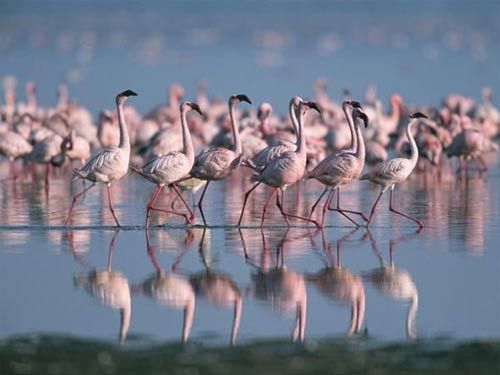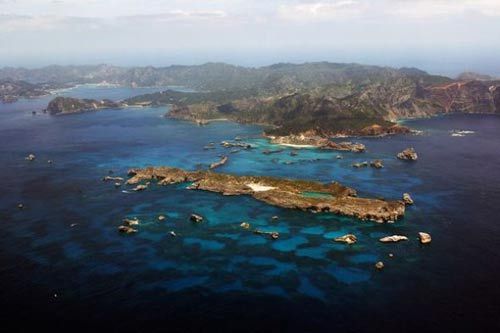According to the United States National Geographic website reported, the United Nations "World Heritage List" to further expand, add 4 natural heritage sites, including the Kenya lake system, Japan's Ogasawara Islands, Australia's Ningaloo coast and Jordan wadilamu reserve. In addition, the Honduras thunder Oprah Tano biosphere reserve to return to the "World Heritage in danger", India Manas wildlife protection is to get rid of "World Heritage" endangered hat.
The 1 Kenya lake system
 Kenya lake system (photograph: Roy Toft, National Geographic)
Kenya lake system (photograph: Roy Toft, National Geographic)A not dated photos, showing the Kenya Rift Valley lakes, a flock of flamingos stand in shallow lake. Kenya lake is the United Nations "World Heritage List" 4 new natural heritage site. Here has a rich bird life, with 13 kinds of endangered species and flamingo, white pelican, we are familiar with the birds. Many iconic animal in Africa, such as the black rhino, giraffe, lion and cheetah, also thrived here.
International Federation of world heritage projects to protect the natural leader Tim - Bindman said in a statement: "the lake system in Kenya is an amazing and magnificent place, there was a lot of birds, was one of the most important natural heritage." With the expansion in 2011 June, "World Heritage List" included in the nature, culture and the mix of natural and cultural heritage of a total of 936. The United Nations says, these famous tourist destination we need special protection, which belongs to all mankind, whether they are located in which a country.
2 of Japan's Ogasawara Islands
 Japan's Ogasawara Islands (photograph: Takahiro Okano, MOE/UNESCO)
Japan's Ogasawara Islands (photograph: Takahiro Okano, MOE/UNESCO)An aerial photographs, showing around Japan's Ogasawara Islands, sea and sky. Ogasawara Islands had been called "the Bonin Islands", is now one of the "World Heritage List" of new natural heritage. The nearly 200 kinds of endangered birds and at least a critically endangered bat Pteropus life -- with the islands.
The Ogasawara Islands in an evolutionary crossroads, life of more than 400 kinds of native plant populations. In addition to this crossroads, some species in Southeast Asia and Southeast Asia and other species in the world can not be seen in any other region. The International Union for conservation of nature World Heritage Asia office project coordination officer Peter, he said: "the Ogasawara Islands located in remote areas, allowing the animal and plant evolution in uninterrupted circumstances, is a living laboratory evolution."
No comments:
Post a Comment